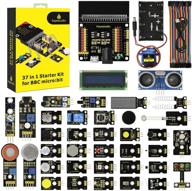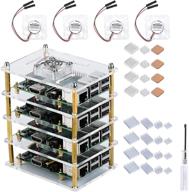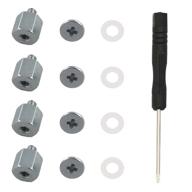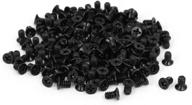
Review on 🌈 Enhance Your Arduino and Raspberry Pi Projects with KOOKYE Lilypad LEDs (25x Lilypad LED) in Red/Yellow/White/Blue/Green Variants by Daniel Bruce

Ideal for textile projects
They attach but tear very easily. Nice little design with big enough pads for easy soldering. They have a built in 150 ohm resistor (R) so they can be connected directly to a voltage source. The color is nice, they are very bright. Here are the specs/specs of each. ), Forward Voltage (VF) 2.0 to 2.4 V Blue - Forward Current 20 mA (IF), Forward Voltage (VF) 3.2 to 3.8 V Yellow - Forward Current 20 mA (IF), Forward Voltage (VF) 2, 0 to 2.4VWhite - Forward Current 30mA (IF), Forward Voltage (VF) 3.3 to 4.0V Green - Forward Current 20mA (IF), Forward Voltage (VF) 3.2 to 3.8V Based on From the specifications above, the voltage ranges to achieve IF are shown below. Voltages below the recommended voltage are acceptable, but exceeding the recommended voltage will most likely damage the LED. = ((IF / 1000) * R) + FV You get descending brightness with 3.3V circuits. All colors are safe to use with 5V circuits. The LED voltage must be at least FV to get some light. If you use multiple colors in the same circuit, you can add an extra resistor to some to balance the brightness. For example, if you add an external 150-220 ohm resistor to a red LED, you can reduce the brightness to balance with blue or green LEDs. If you have a microcontroller you can also use a technique called PWM to adjust the apparent brightness of each LED. My only issue with them, which I didn't deduct a rating for, is that each LED has the same built-in 150 ohm resistor. Taking AC forward current and forward voltage into account, the values had to be changed to optimize for 3.3V circuits (based on the operating voltage of the Lilypad or Flora boards) or at least to work directly with 5V circuits with the maximum voltage of 5 V is as follows: red, yellow from 130 to 150 ohms, blue, green from 60 to 90 ohms, white from 30 to 57 ohms. At 3.3V, only the red and yellow LEDs require a very small 45 to 65 ohm resistor. Again, if you need to balance the brightness, you can add an external resistor. Perhaps this information and/or formula will help you determine the best value.
- Excellent overall
- Doubtful
New products
Comments (0)
Top products in 🖥️. Single Board Computers

LAFVIN Super Starter Kit for Arduino R3 Mega2560 Mega328 Nano with Detailed Tutorial - Compatible with Arduino IDE

11 Review

🎁 Ultimate BBC Micro bit Sensor Starter Kit: Keyestudio 37-in-1 Box with Tutorial, Compatible with V1.5 & V2, Gift for Kids and Adults (Microbit Board Not Included)

11 Review

Vilros Raspberry Pi 4 4GB Complete Starter Kit - Black Fan-Cooled Aluminum Case for Heavy-Duty Performance

12 Review

GeeekPi Raspberry Pi Cluster Case with Cooling Fan and Heatsink for Pi 4 Model B, 3 Model B+ & 3/2 Model B

11 Review
Another interesting products

M.2 Screw Kit: Easy Mounting for NVMe SSDs on ASUS Motherboards

19 Review

uxcell 3.5" HDD Screw Black 200pcs for Computer PC Case - Flat Phillips Head - 6#-32 - Hard Drive Fasteners

10 Review

MacBook Retina 13-inch (A1425, A1502) and 🔩 15-inch (A1398) Bottom Case Screw Set with Pentalobe Screwdriver

11 Review

🔧 Premium Repair Replacement Screws & Tools for MacBook Pro Retina 15"/13" - Complete Bottom Case Set

10 Review

